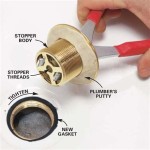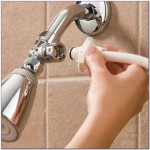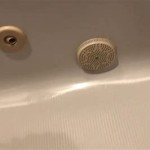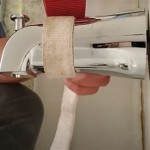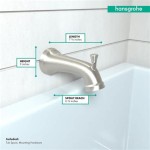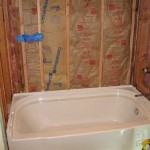Ants Emerging from Bathtub Overflow Drain: Causes and Solutions
The unexpected appearance of ants crawling out of a bathtub overflow drain can be a disconcerting experience for homeowners. This seemingly unusual phenomenon indicates a larger underlying issue, usually involving a nearby ant colony seeking resources or a more suitable nesting location. Understanding the reasons behind this behavior and implementing appropriate control measures are crucial for resolving the problem and preventing future infestations.
The presence of ants in a bathroom, and specifically emerging from the overflow drain, suggests that the colony has identified a viable pathway into the dwelling. Bathrooms, with their inherent moisture and potential food sources (even seemingly insignificant ones like soap residue or dead skin cells), can be attractive to certain ant species. The overflow drain, typically connected to a network of plumbing and wall cavities, provides a protected and often humid environment conducive to ant nesting.
Understanding Ant Behavior and Habitat Preferences
Ants are social insects that live in colonies, often consisting of thousands or even millions of individuals. Their primary objectives are survival and reproduction, which necessitate finding food, water, and a safe nesting site. Certain ant species are particularly adept at exploiting small cracks and crevices to access buildings, making them a common nuisance in residential areas. The size and location of an ant colony can vary greatly depending on the species and environmental conditions.
The presence of moisture is a significant attractant for many ant species. Leaky pipes, condensation, and standing water create ideal conditions for them to thrive. Bathrooms, with their regular water usage and tendency for humidity, can inadvertently provide the resources these pests need. Even minor leaks behind walls can go unnoticed for extended periods, creating a perfect environment for ant colonies to establish themselves.
Furthermore, ants are highly adaptable foragers. They are capable of traveling considerable distances to locate food sources and will readily exploit any available opportunity. This means that even if the primary food source is not directly in the bathroom, ants may still use the overflow drain as a passageway to access other areas of the house or even outdoors.
Common Ant Species Found in Bathrooms
Several ant species are commonly found infesting homes, and some are more likely to be encountered in bathrooms than others. Identifying the specific ant species is essential for determining the most effective control strategies.
One common culprit is the sugar ant (Camponotus spp.). These ants are attracted to sugary substances and are often found foraging for food scraps in kitchens and bathrooms. They are relatively large ants, typically black or dark brown, and can be easily identified. Carpenter ants (also Camponotus spp.) are known to excavate wood to build nests, which can cause structural damage to buildings. While not typically found inside drain pipes, they may establish colonies in the wall voids surrounding the plumbing and subsequently emerge from the overflow drain as they forage.
Another frequently encountered pest is the pharaoh ant (Monomorium pharaonis). These small, yellow-brown ants are known for their ability to form multiple nests within a building, making them difficult to eradicate. They are highly adaptable and can thrive in a variety of environments, including bathrooms. Pharaoh ants are attracted to both sugary and protein-rich foods, and they will readily exploit any available food source.
Pavement ants (Tetramorium caespitum) are also commonly found in homes. They are dark brown or black ants that typically nest under sidewalks, driveways, and other paved areas. However, they can also enter buildings through cracks and crevices in the foundation and may be found foraging in bathrooms. These ants are known for their aggressive behavior and can sting if disturbed.
Addressing the Ant Infestation: Identification and Treatment
The first step in addressing an ant infestation is to accurately identify the ant species. This can be done by observing their physical characteristics (size, color, shape) and their behavior. Taking clear photographs or collecting a sample of the ants in a sealed container can be helpful for identification purposes. Consulting with a pest control professional is often the most reliable way to determine the species accurately.
Once the ant species has been identified, the next step is to locate the nest or colony. This can be a challenging task, as ants may nest in hidden locations within walls, under floors, or even outside the building. Following the ants' trails can often lead to the nest. Observing their behavior and noting where they disappear can provide valuable clues about the nest's location.
Several treatment options are available for controlling ant infestations. The most effective approach often involves a combination of methods, including baiting, spraying, and sealing entry points. Baits are particularly effective because they allow the ants to carry the insecticide back to the colony, where it can be distributed to other members. Liquid baits are often preferred for sugar-loving ants, while protein-based baits may be more effective for other species.
Spraying insecticides can provide immediate relief by killing ants on contact. However, it is important to use insecticides carefully and to follow the manufacturer's instructions. Avoid spraying insecticides directly on food preparation surfaces or in areas where children or pets may come into contact with them. Focus on treating cracks and crevices where ants are likely to enter the building. Residual insecticides can provide long-lasting control by leaving a barrier that repels or kills ants that come into contact with it.
Sealing entry points is crucial for preventing future infestations. Inspect the exterior of the building for cracks and crevices in the foundation, around windows and doors, and where pipes and wires enter the building. Seal these openings with caulk or other suitable materials. Ensure that windows and doors are properly sealed and that screens are in good repair. Maintaining a clean and dry environment can also help to deter ants and prevent them from establishing colonies in the bathroom.
In addition to these measures, addressing any underlying moisture problems is essential. Repair leaky pipes, fix dripping faucets, and ensure that the bathroom is well-ventilated to prevent condensation. Consider using a dehumidifier in the bathroom to reduce humidity levels, especially in areas prone to moisture buildup.
When dealing with a significant ant infestation, enlisting the services of a qualified pest control professional is often the most effective solution. Pest control professionals have the knowledge, experience, and equipment to identify the ant species, locate the nest, and implement a comprehensive treatment plan. They can also provide advice on how to prevent future infestations.
Can Ants Come Up Through The Water Drain Quora
Ants In Your Bathroom Here S Why And How To Stop Them Too Getjerry Com
Can Ants Come Up Through The Water Drain Quora
Why Are There Ants Coming Out Of My Shower Head I Have Had Issues With In The Past But They Never Came
Can You Stop Ants From Coming Through A Water Sink Or Bathroom Drain What Is Was The Best Worst Way To Them Up

How To Get Rid Of Ants In The Bathroom Sink Pest Control Boise Idaho Pestcom Management

Timy Clear Bugs Coming In Bath Tub Tiktok
How To Get Rid Of Little Black Ants In My Shower Quora

How To Clean A Sink Overflow Drain

How To Get Rid Of Ants In The Bathroom Sink Pest Control Boise Idaho Pestcom Management

